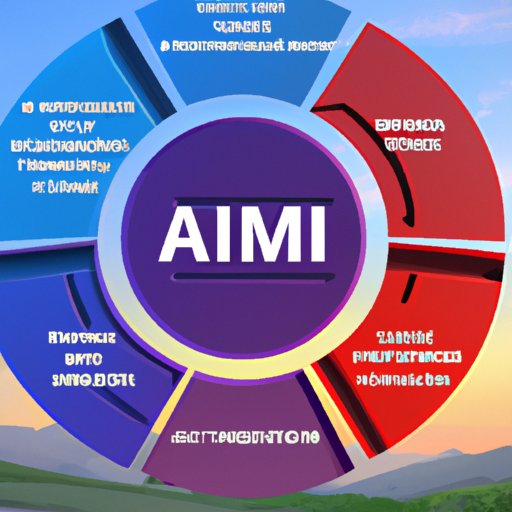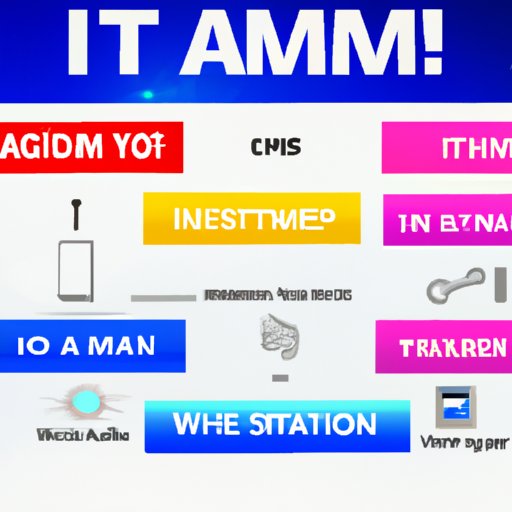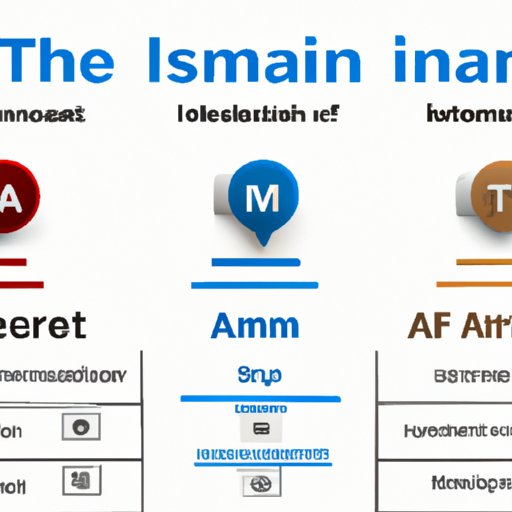Introduction
Identity and access management (IAM) technology is a set of tools and processes used to control the access and use of digital resources within an organization. With IAM technology, organizations can ensure that only authorized personnel have access to sensitive data and resources, while improving security and streamlining user experience. In this article, we will explore what IAM technology is and how it works, as well as its benefits and how to get started with implementing it for your business.

A Comprehensive Guide to What IAM Technology Is and How It Works
Let’s start by defining what IAM technology is and understanding how it works.
What is IAM Technology?
IAM technology, also known as identity and access management technology, is a set of tools and processes used to manage identities and access to digital resources within an organization. It allows organizations to control who has access to which data and resources, as well as how they are used, thereby ensuring only authorized personnel are able to access sensitive information. The technology also allows for improved security and enhanced user experience through streamlined authentication processes.
How Does IAM Technology Work?
The main components of IAM technology are authentication, authorization, and audit. Authentication is the process of verifying a user’s identity, usually through credentials such as username and password or biometrics. Authorization is the process of granting or denying access to a resource based on the user’s identity and role. Audit is the process of tracking and logging user activities to ensure compliance with policies and regulations.
Exploring the Benefits of Implementing IAM Technology
Now that we have a better understanding of what IAM technology is and how it works, let’s explore some of the key benefits of implementing it for your organization.
Improved Security
One of the most significant benefits of IAM technology is improved security. By controlling who has access to which data and resources, organizations can reduce the risk of unauthorized access and data breaches. Additionally, IAM technology can help protect against malicious actors by preventing them from accessing sensitive information even if they have obtained a user’s credentials.
Increased Efficiency
IAM technology can also lead to increased efficiency in the workplace. By streamlining the authentication process and reducing the need for manual intervention, organizations can save time and effort when managing user access. Additionally, organizations can automate certain processes such as account provisioning and password resets, further improving efficiency.
Cost Savings
Implementing IAM technology can also result in cost savings for organizations. By automating certain processes such as user provisioning, organizations can reduce the need for manual labor and associated costs. Additionally, IAM technology can help organizations reduce the risk of data breaches, which can be costly in terms of both financial losses and reputational damage.

How to Get Started With IAM Technology
Now that you know the benefits of IAM technology, let’s look at how to get started with implementing it for your organization.
Understanding Your Needs
The first step to implementing IAM technology is understanding your needs. Consider the types of users and resources you need to manage, as well as the level of security you require. This will help you determine the type of solution that best fits your organization’s needs.
Choosing the Right Solution
Once you have a better understanding of your needs, you can begin researching and comparing different types of IAM solutions. Make sure to evaluate all the features and functions offered by each solution, as well as their security protocols and pricing structure.
Implementing the Technology
Once you have selected the right solution for your organization, you can begin the implementation process. This typically involves configuring the software and integrating it with your existing systems and processes. Additionally, you may need to train users on the new system and ensure proper security measures are in place.

A Comparison of Different Types of IAM Technology
When selecting an IAM solution for your organization, it’s important to understand the differences between the various types of technology available. Let’s take a look at three of the most common types of IAM solutions.
Single Sign-On (SSO) Solutions
Single sign-on (SSO) solutions allow users to log in to multiple applications and services with a single set of credentials. SSO solutions provide users with a more streamlined and secure authentication process, as well as improved convenience and efficiency.
Multi-Factor Authentication (MFA) Solutions
Multi-factor authentication (MFA) solutions provide an additional layer of security by requiring users to authenticate themselves using two or more factors. Common MFA methods include a personal identification number (PIN), one-time password (OTP), biometric authentication, and device recognition.
Identity and Access Management (IAM) Solutions
Identity and access management (IAM) solutions provide organizations with a comprehensive platform for managing user identities and access to resources. IAM solutions typically include features such as user provisioning, password management, and role-based access control.
Five Reasons Why Your Business Should Invest in IAM Technology
Now that you know what IAM technology is and how it works, let’s take a look at why your business should invest in it. Here are five reasons why your business should consider investing in IAM technology:
Improved Security
As mentioned earlier, IAM technology can help improve security by controlling who has access to which data and resources. This can help reduce the risk of unauthorized access and data breaches, as well as protect against malicious actors.
Increased Efficiency
IAM technology can also lead to increased efficiency in the workplace by streamlining authentication processes and automating certain tasks such as account provisioning and password resets.
Cost Savings
Implementing IAM technology can also result in cost savings for organizations. By automating certain processes such as user provisioning, organizations can reduce the need for manual labor and associated costs.
Streamlined User Experience
IAM technology can also provide a more streamlined user experience by simplifying the authentication process and providing users with easier access to the resources they need.
Ability to Scale
Finally, IAM technology can enable organizations to scale up or down as needed. By automating certain processes, organizations can add or remove users quickly and easily without having to manually manage each individual user.
Conclusion
IAM technology is a powerful tool for organizations looking to improve security, increase efficiency, and reduce costs. Implementing IAM technology can provide organizations with a more streamlined user experience, improved security, and the ability to scale up or down as needed. Understanding the different types of IAM solutions available and evaluating your needs will help you make the right choice for your organization. Investing in IAM technology is a smart move for any business looking to stay ahead of the competition.
(Note: Is this article not meeting your expectations? Do you have knowledge or insights to share? Unlock new opportunities and expand your reach by joining our authors team. Click Registration to join us and share your expertise with our readers.)
